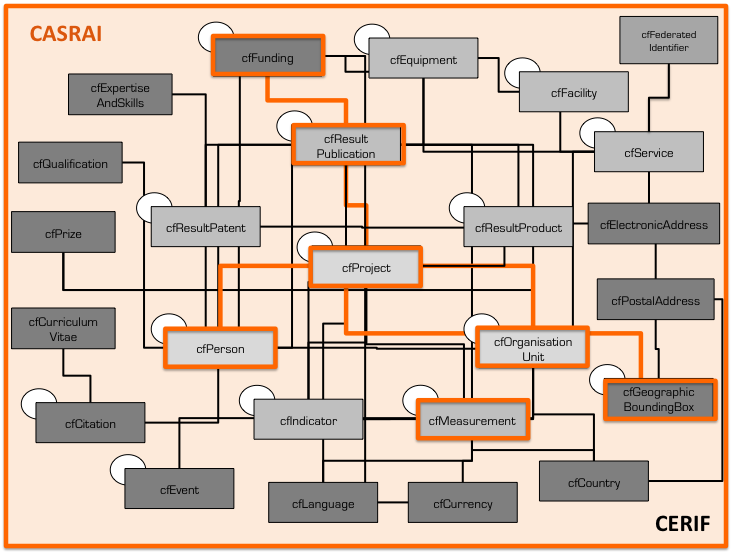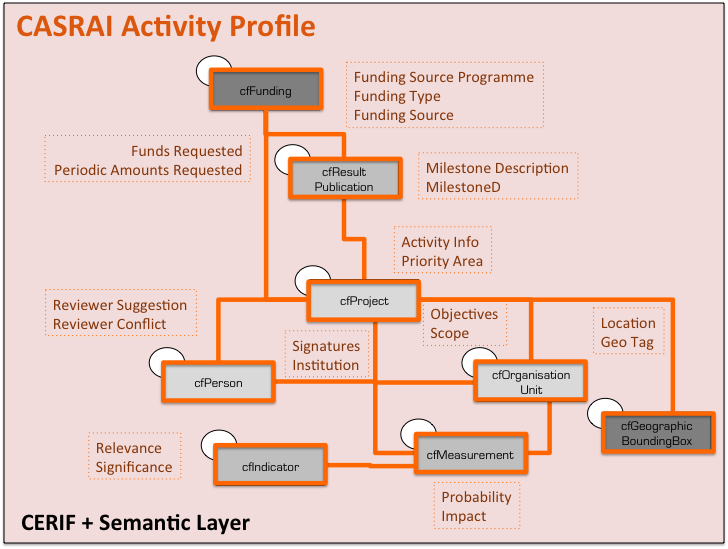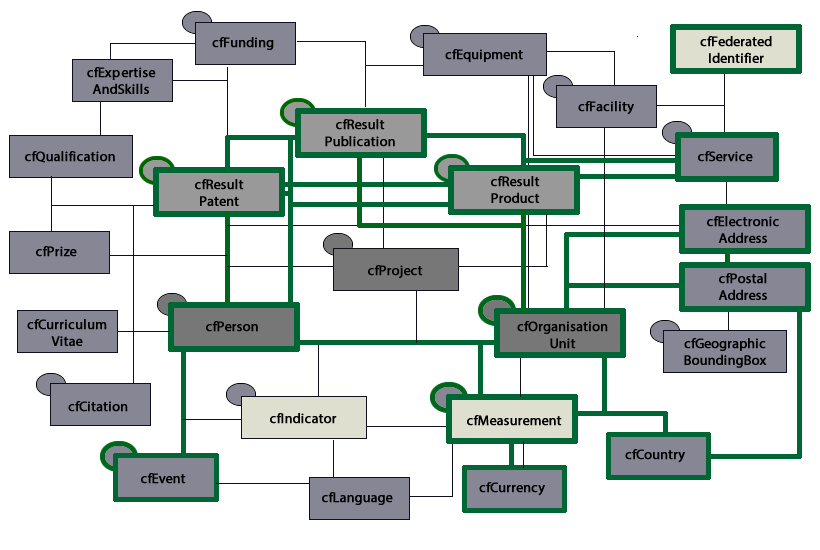This post continues from the REF Reporting Profile in CERIF (Entities) and elaborates on the employed vocabularies. With CERIF all vocabularies are maintained in the so-called CERIF Semantic Layer, which allows for the maintenance of multiple vocabularies. Within the Semantic Layer, each term belongs to at least one particular vocabulary or so-called classification scheme. A classification scheme defines the range of terms and could in fact – in more technical terms – also be seen as a term’s namespace.
For the REF Reporting Profile, the following vocabularies (classification schemes) have been defined:
- REF Multiple Submission Categories
- REF Organisation Types
- REF Organisation Categories
- REF Action Types
- REF Person Names Scheme
- REF Identifier Types
- REF Staff Categories
- REF Contract Types
- REF Staff Measurements
- REF Staff Circumstance Identifiers
- REF Sensitivity States
- REF Staff Research Groups
- REF Output Categories
- REF Output Types
- REF Output Measurements
- REF Organisation Measurements
- REF Income Source Identifiers
- RER Income Kind Source Identifiers
- REF Impact Statements
- REF Environment Statements
- REF Case Studies
- REF Case Study Categories
- REF Redaction Statuses
- REF Case Study Contacts
- REF Units of Assessment
- Institution’s Research Group Codes
- Institution’s Geographic Boundings
- Institution’s Media Relations
- Institution’s Job Titles
Thus, each classification scheme from this list contains multiple vocabulary terms, e.g. Update, Overwrite, Delete with REF Action Types, or e.g. HESA Staff Identifier, Staff Identifier, Article Number, DOI, Patent Number with REF Identifier Types. The terms and the schemes have been defined following the REF Submission requirements.
The subsequent post will elaborate on the applied REF terms and their application with particular CERIF entities. That is, the context in which they occur following the CERIF model, e.g. Update may be required with a staff record, i.e. concerns a person (cfPers.Pers_Class.), or at an institution (cfOrgUnit.OrgUnit_Class), or with an output (cfResPubl.ResPubl_Class), etc. Another example would be, e.g. the HESA Staff Identifier (a federated identifier) belongs to a person (cfPers.cfFedId.cfFedId), whereas the DOI (a federated identifier) comes with a publication (cfResPubl.cfFedId.cfFedId).
See: REF Reporting Profile in CERIF (Terms)






